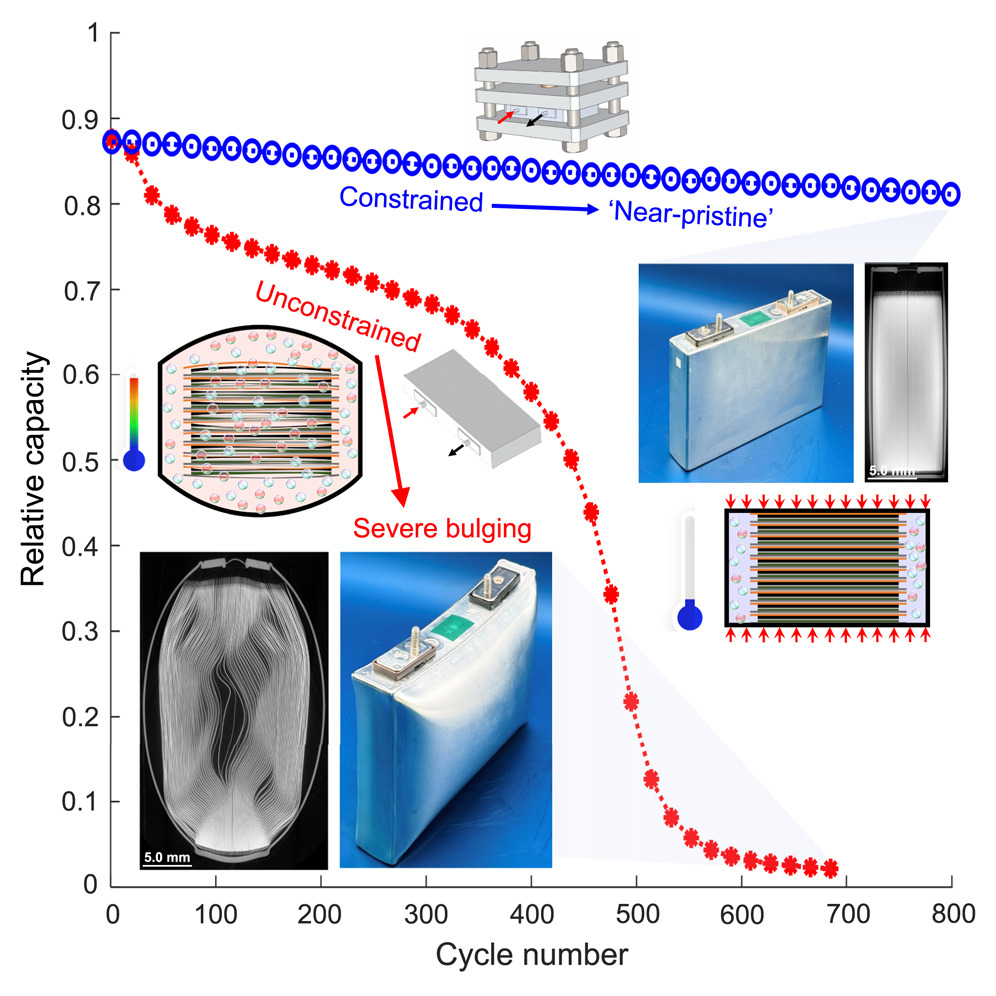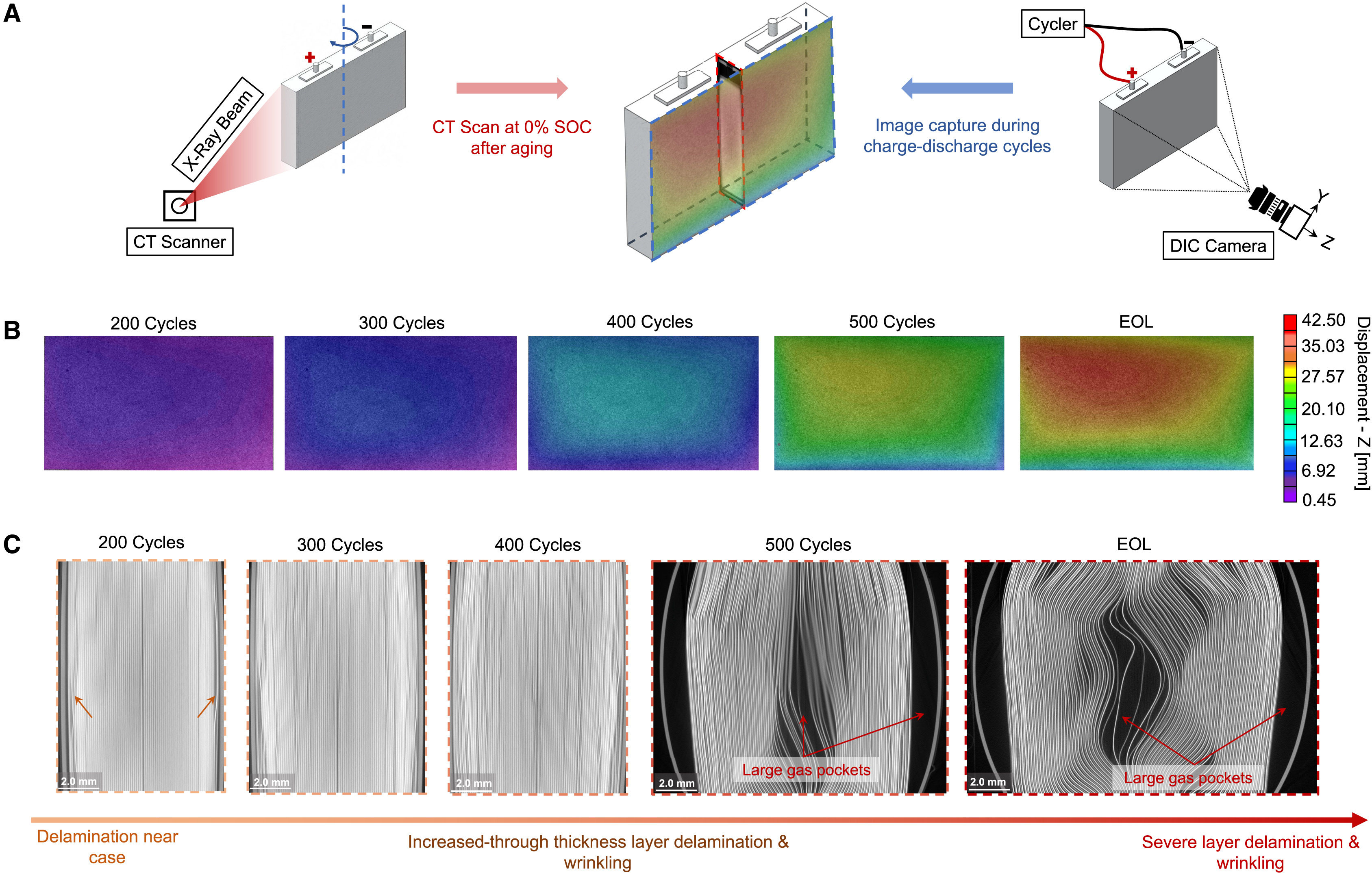Paper published: CT scans of aged prismatic cells as a function of mechanical constraints
Glimpse’s joint publication with Juner Zhu’s group at Northeastern University was recently published in Cell Reports Physical Sciences! You can read more about it on Glimpse’s blog here. You can read the manuscript here.
Copying from the Glimpse blog post:
The main goal of this paper was to evaluate how external pressure impacts the aging behavior of commercial prismatic cells. The results are clear: While cells cycled with mechanical constraints exhibit minimal capacity loss, these same cells cycled without any mechanical constraint exhibit catastrophic capacity loss. The unconstrained cells also have obvious bulging, implying significant gas generation. However, the location of the gas was ambiguous: did the gassing affect the jellyroll’s structural integrity, or did the jellyroll stay intact?
CT scanning the cells periodically over life (see below) quickly revealed the answer: The jellyroll of the unconstrained cell began exhibiting mechanical deformation as early as 200 cycles and then deformed massively (delamination, visible gas pockets, etc.) upon subsequent cycling. The “knee” in the capacity-cycle number from 300 to 500 cycles tracks with when major cell deformation occurs as visualized via CT.

CT scans of a prismatic cell without mechanical constraints obtained throughout a cycling test. Note the severe deformation of the jellyroll and casing that occurs over the cell’s lifetime. Reproduced from Figure 2 of Ihuaenyi et al.
CT scanning provides invaluable insights into cell performance, reliability, and lifetime. Contact us if you’d like to leverage high-throughput, high-quality CT scanning for your cell development and testing needs.
